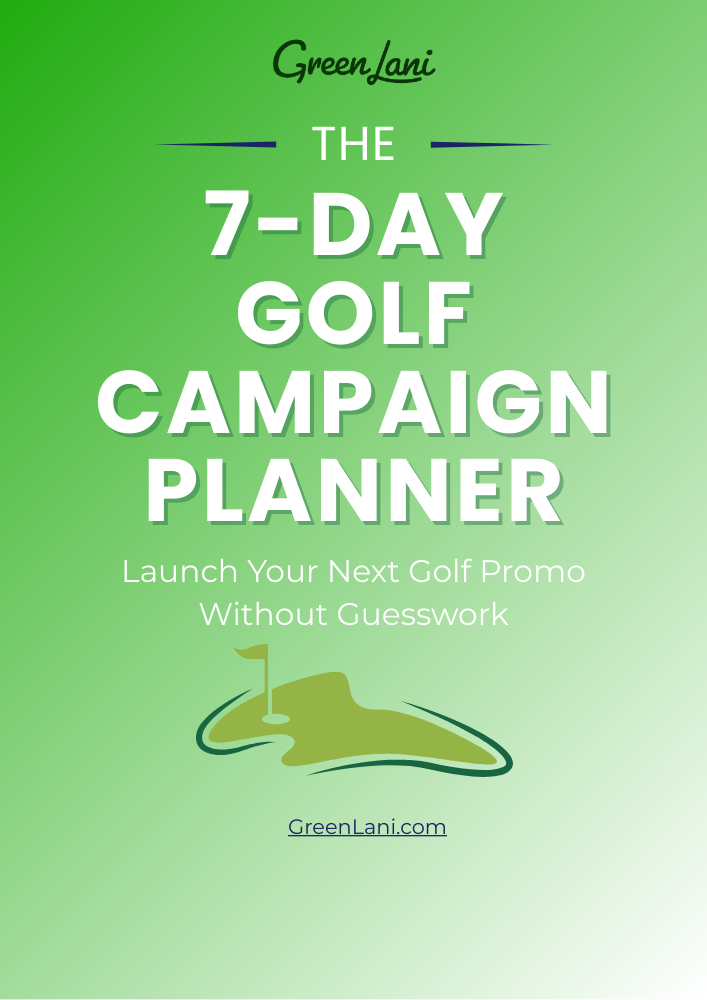Facebook ads for golf companies
Facebook Ads for Golf Companies
How golf brands can use Facebook and Instagram ads to reach the right players, grow their audience, and drive sales without wasting ad spend. 💸

Facebook and Instagram still dominate when it comes to targeting golfers by interest, behavior, and buying patterns. The problem? Most golf brands boost a post and hope for the best—burning budget without clear results.
Here’s how to build high-performing Facebook ads for golf companies using a tested structure that works whether you’re selling apparel, gear, memberships, or lessons.
✅Step 1: Start With the Right Audience
Meta's targeting tools let you reach golf fans with precision. Avoid broad audiences and instead use:
- Interest targeting: Golf Digest, PGA Tour, specific player names, golf training, equipment brands
- Behavior targeting: Online shoppers, sports gear buyers, recent website visitors
- Lookalike audiences: Based on past customers or email subscribers
- Custom audiences: Your email list, site visitors, or people who watched past videos
🎯 Focus on relevance over size. You don’t need a million people—you need a tight, qualified group likely to convert.
✅ Step 2: Choose the Right Campaign Objective
Your objective shapes how Facebook delivers your ad.
- Conversions: Best for product sales and lead capture
- Traffic: Use when you’re driving to a landing page or blog
- Video views: Great for low-cost brand awareness if you're testing creative
- Engagement: Use for giveaways or UGC contests to increase reach
Most golf brands running ecommerce should start with Conversions, but test engagement or video campaigns to warm up colder audiences.
✅ Step 3: Craft Golf-Specific Ad Creative
This is where most ads go wrong.
Your creative should immediately show the product, setting, or benefit in a way that resonates with golfers.
Tips for standout ads:
1. Use clear, bold product shots (ideally on course or in motion)
2. Add captions for videos (many users scroll muted)
3. Use short copy with golf-specific phrases or hooks:
● “Grip it. Rip it. Limited run now live.”
● “Tour-ready gear for everyday players”
● “Built for swing days, course days, and chill days.”
And always, always include a strong call to action (CTA) like:
● “Shop now”
● “See the new drop”
● “Grab yours before they’re gone”
✅ Step 4: Build a Simple Funnel
The best results come from a basic 3-stage ad funnel:
| Stage | Goal | Ad Type |
|---|---|---|
| Top of Funnel (TOF) | Awareness & views | Video or post engagement ads targeting interest-based audiences |
| Middle of Funnel (MOF) | Consideration | Retarget past video viewers, site visitors with product benefit ads |
| Bottom of Funnel (BOF) | Conversions | Retarget cart abandoners, email list, or page engagers with direct offers |
Each stage feeds the next—so keep budget balanced and test creatives for every layer.
✅ Step 5: Optimize and Scale
Run your ads for at least 3–5 days before tweaking.
Then:
● Kill underperforming ads (low CTR or high cost-per-click)
● Duplicate and scale winning creatives
● Test new hooks, visuals, or formats regularly
📈 Want better insights? Pair your Facebook data with Google Analytics or post-purchase survey tools to learn what actually converts.
Final Note: Ads Work Better With a Plan
Facebook ads are powerful—but they’re not magic. The brands that win use them in coordination with email, launch timing, and consistent messaging.
Need help launching campaigns that work together?

Copyright 2025 © GreenLani.com. All Rights Reserved
